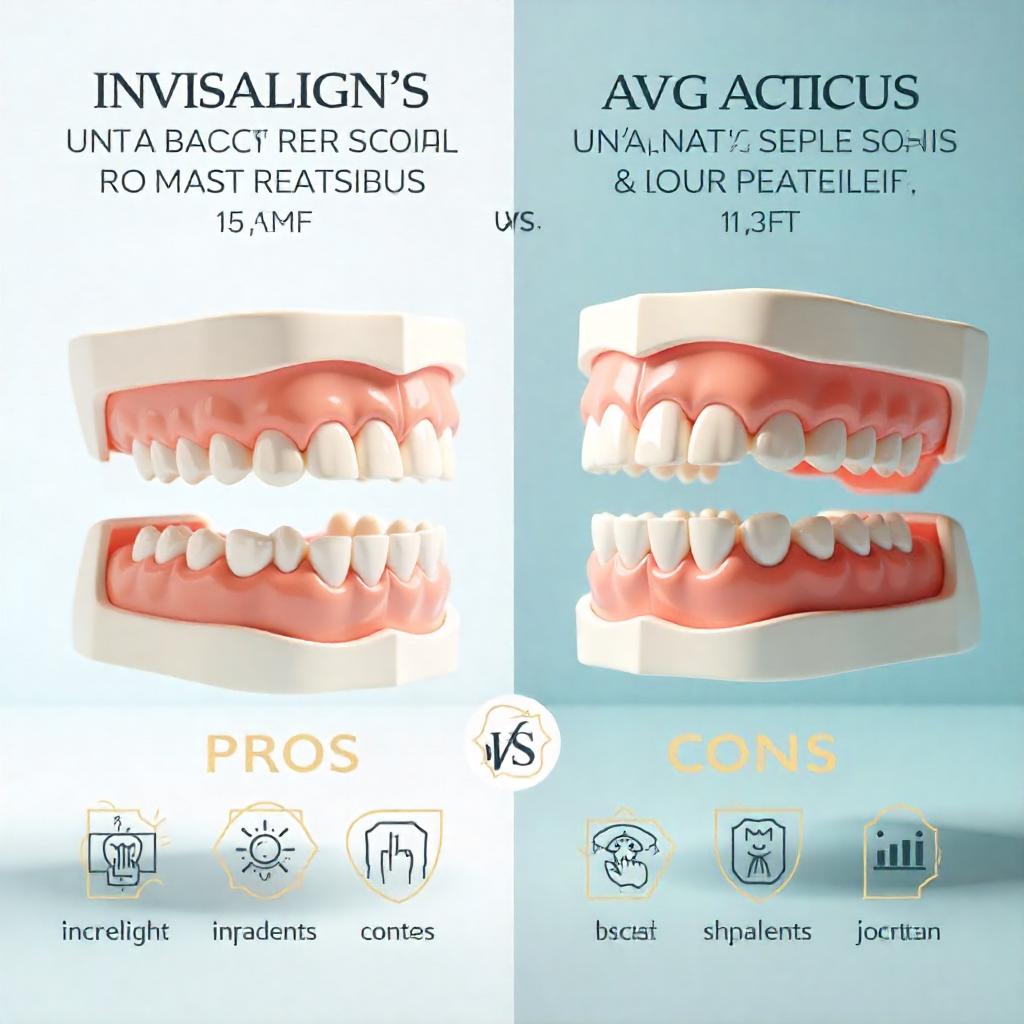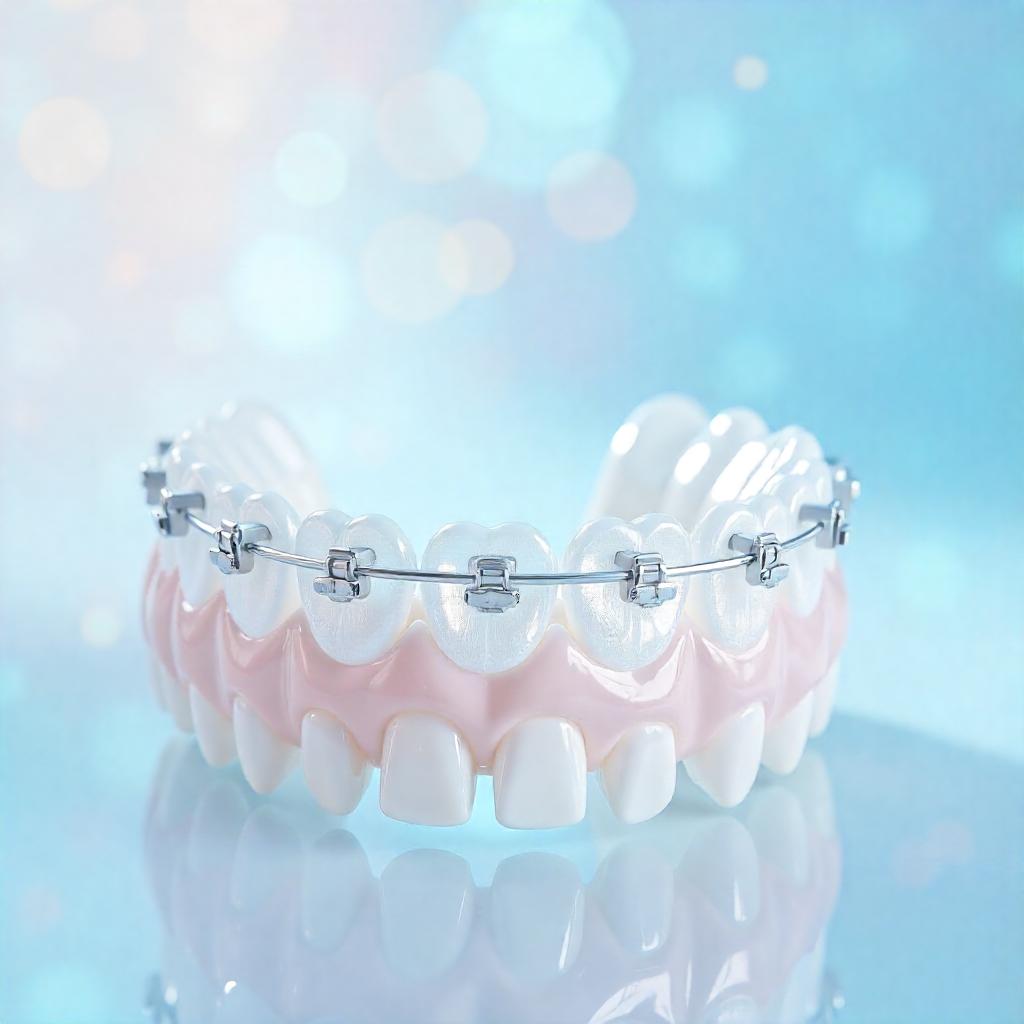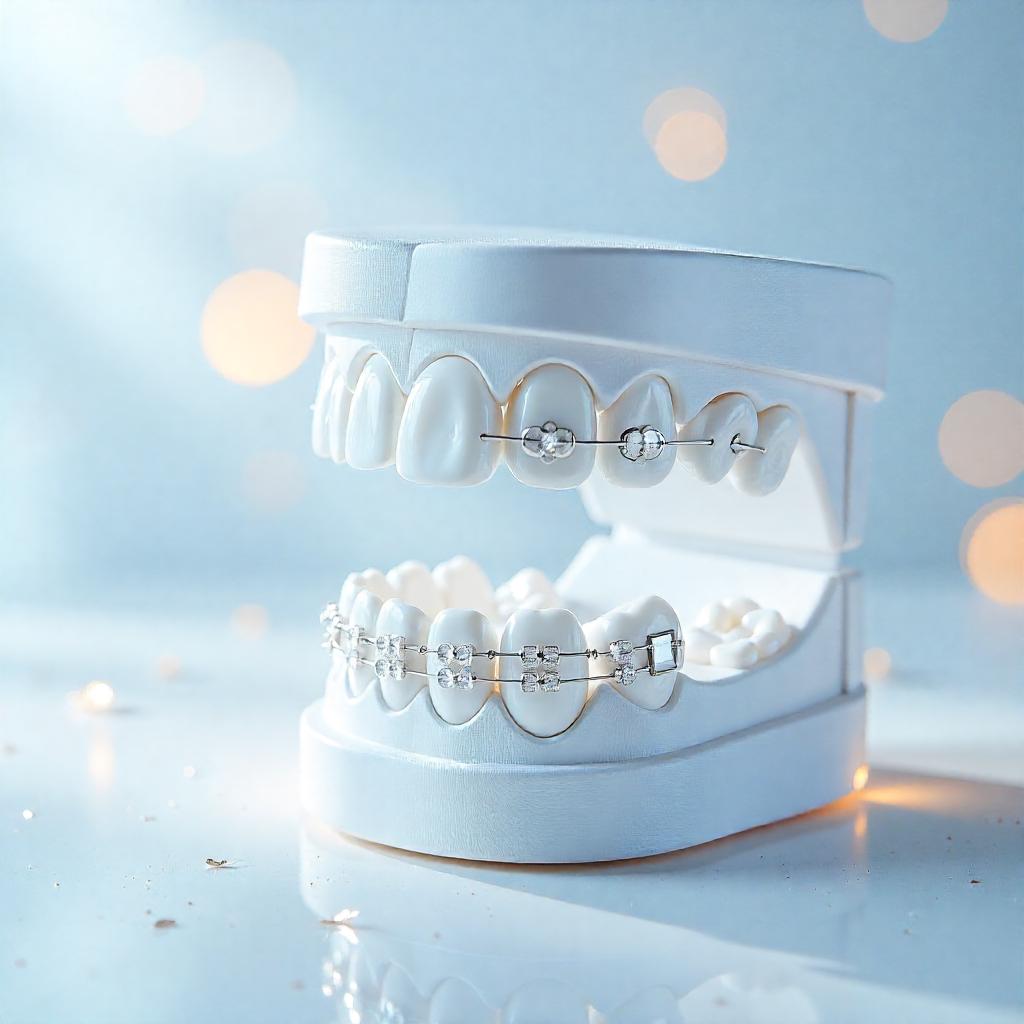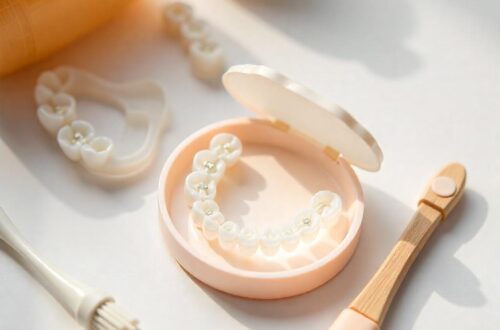When it comes to straightening teeth, two popular options dominate the conversation—traditional braces and Invisalign. Each has its own set of strengths, challenges, and suitability factors. Choosing between these methods depends on various considerations, including dental condition, lifestyle, and personal preferences. This comprehensive guide breaks down the pros and cons of Invisalign and braces to help you make an informed decision.
What Are Braces and Invisalign?
Braces and Invisalign are orthodontic treatments designed to correct a range of dental misalignments like crooked teeth, overcrowding, and bite issues. While their ultimate goal is the same, their approach and benefits differ significantly:
- Braces involve the use of metal brackets attached to the teeth, connected with wires to gradually realign the teeth.
- Invisalign uses a series of clear plastic aligners that fit snugly over your teeth and can be removed as needed.

Pros and Cons of Braces
Braces have been a proven dental solution for decades. Here’s an overview of the advantages and disadvantages:
Pros of Braces
- Highly Effective for Complex Cases
Traditional braces can handle severe misalignments, including significant tooth rotation, large bite adjustments, and jaw positioning issues. They are particularly suited for cases that require comprehensive correction.
- Non-Removable
Because braces are fixed onto teeth, there’s no risk of forgetting to wear them, making them ideal for patients who may not follow wearing schedules strictly.
- Customizable Appearance
While metal braces are the most common, other options like ceramic braces and lingual braces (placed behind the teeth) improve aesthetics.
- Continuous Progress
Braces work around the clock, providing consistent pressure to guide teeth into alignment as planned by the orthodontist.
Cons of Braces
- Aesthetic Concerns
The visibility of brackets and wires can make some patients self-conscious, despite more discreet options like ceramic braces.
- Dietary Restrictions
Sticky, hard, or crunchy foods need to be avoided to prevent damage to the braces or loosening of wires.
- Oral Hygiene Challenges
Cleaning around braces can be painstaking, as food particles are prone to getting stuck, increasing the risk of cavities if neglected.
- Discomfort
Periodic adjustments may cause soreness or irritation of the inside cheeks and gums, especially during the initial stages.
Pros and Cons of Invisalign
Since its introduction, Invisalign has gained popularity among teens and adults for being nearly invisible and lifestyle-friendly. Below are its key advantages and drawbacks.
Pros of Invisalign
- Discreet Appearance
Invisalign aligners are transparent, making them virtually invisible to others and a preferred choice for individuals seeking subtle orthodontic treatment.
- Removability
The aligners can be removed for eating, drinking, brushing, and flossing, offering greater flexibility and fewer lifestyle interruptions.
- Comfortable Fit
Custom-made using advanced technologies, Invisalign aligners are designed to fit snugly without causing abrasions or irritation.
- No Dietary Restrictions
Since the aligners are taken out during meals, you can enjoy all types of food without worry.
- Digital Treatment Planning
Invisalign treatment utilizes 3D imaging to visualize progress and the anticipated end result, giving patients more clarity on their dental journey.
Cons of Invisalign
- Not Ideal for Severe Issues
Invisalign is less effective for complex orthodontic problems, such as extreme overcrowding or significant bite corrections.
- Requires Disciplined Wear
Aligners must be worn for 20–22 hours daily to be effective. Skipping wear time can delay progress.
- Cost Considerations
Invisalign typically comes at a higher price than traditional braces, especially if refinements or additional aligners are required.
- Easily Misplaced
Being removable increases the risk of losing aligners, especially for younger patients.
- Regular Cleaning Needed
The aligners require diligent cleaning to prevent staining or bad odor.

Key Comparisons
Treatment Duration
- Braces often take between 18 to 24 months, though complex cases may require more time.
- Invisalign generally provides faster results for simpler cases, with average completion times of 12 to 18 months.
Effectiveness
- Braces are a versatile option for treating severe dental issues.
- Invisalign works best for mild to moderate alignment problems.
Lifestyle Impact
- Braces may limit food choices and require careful cleaning, which can be inconvenient.
- Invisalign integrates seamlessly into most lifestyles, offering easy maintenance and minimal disruption.
Cost
- Braces are generally less expensive, with prices ranging between $3,000 and $7,000.
- Invisalign costs between $4,000 and $8,000 depending on case complexity and aligner refinements.
Maintenance
- Braces require professional tightening during monthly visits.
- Invisalign involves bi-weekly aligner changes and regular checkups with the orthodontist.
Recent Advancements
Both braces and Invisalign continue to benefit from technological progress, enhancing their efficiency and patient experience:
- 3D Imaging & Printing: Advanced imaging allows precise design of both aligners and braces for better fit and outcomes.
- Self-Ligating Braces: These braces reduce friction and require fewer adjustments, making the treatment more comfortable.
- SmartTrack Material in Invisalign: This innovation improves the aligners’ flexibility and strength, ensuring more predictable tooth movement.
- Virtual Monitoring: Apps and AI-based tools now allow remote monitoring of patient progress for both braces and Invisalign.
Which Option Is Right for You?
Choosing between Invisalign and braces depends on your individual needs and priorities. Consider factors such as the complexity of your dental case, budget, and lifestyle requirements. A consultation with an orthodontist is crucial to create a personalized treatment plan.
When to Choose Braces
- Severe misalignments or bite issues
- Younger patients who might misplace removable aligners
- Preference for a cost-effective solution
When to Choose Invisalign
- Desire for an almost invisible treatment
- Busy lifestyle requiring flexibility
- Mild to moderate alignment issues
Final Thoughts
Both Invisalign and braces are effective orthodontic solutions, but each comes with unique strengths and limitations. Staying informed and consulting with an experienced dental professional will help you choose the right method for achieving your best smile. With ongoing advancements in treatment options, there’s never been a better time to start your orthodontic journey.






